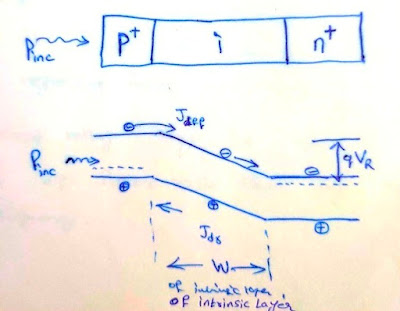A B C D E F G H I J K L M N O P Q R S T U V W X Y Z
Dimension
Dimension of a
space or object is informally defined as minimum number of coordinates required
to specify any point with in it. Dimension of physical quantity is combination
of basic physical dimensions (usually mass, length, time, temperature etc)
which describe it.
Dimensional
Analysis
Analysis to find
relation among physical quantities by using their dimensions.
Dimensional
Equation
When the
dimensional formula of physical quantity is expressed in the form of an
equation, then such equation is known as dimensional equation.
Dimensional
Formula
An expression
showing the powers to which the fundamental units are to be raised to obtain
one unit of derived quantity is called as dimensional formula.
Diode
It is an
electronic device that rectifies electric current i.e. current flow in one
direction only.
Dipole
Moment
The product of
either charge in an electric dipole with the distance separating them.
Dipole
Relaxation
When external
alternating field is applied to some materials it leads to formation of
permanent dipole moment, the phenomenon termed as dipole relaxation.
Dipole(Electric)
A dipole is an
entity in which equal positive and negative charges are separated by a small
distance.
Dirac
Constant
Constant used in
quantum mechanics equal to Planck’s constant divided by 2π. It
has a value of 1.05 x 10-34
joules seconds.
Direct
Band Gap Semiconductor
The semi
conductor in which an electron in conduction band can fall to any empty state
in valence band giving off the energy difference (energy gap) as a photon of light.
Direct
Current
Continuous
electric current flowing in one direction without substantial variation in
magnitude is called as direct current.
Directly
Ionizing Radiation
Comprises charged particles (electrons,
protons, charged particles, heavy ions) that deposit energy in the absorber
through a direct one-step process involving Coulomb interactions between the
directly ionizing charged particle and orbital electrons of the atoms in the
absorber.
Discriminator
Discrimination in
radiation detection circuits refers to the process of distinguishing between
different types of radiation on the basis of pulse height. A discriminator
circuit selects the minimum or maximum pulse height that is to be counted.
Disintegration
Constant
See decay
constant.
Disintegration
Physical process
by which atomic nucleus emits particles or energetic rays, which make
composition of nucleus to change.
Dislocation
A linear
crystalline defect around which there is atomic misalignment.
Dispersion
of Light
The phenomenon of
splitting of light into different colors is called as dispersion. It arises due
to variation of refractive index with wavelength.
Dispersion
Whenever the
speed of wave depends on its frequency, supporting medium is called dispersive.
The phenomenon of changing of shape by wave having range of frequencies in a
medium is called as dispersion.
Dispersive
Power of Grating
The rate of
variation of angle of diffraction with the wavelength of light is called
dispersive power of grating.
Dispersive
Power of Prism
The rate of
variation of the angle of deviation with the wavelength of light is called as
dispersive power of prism.
Dispersive
Power
The ratio of
angular dispersion between two colors to deviation of mean ray produced by the
prism is called dispersion power of material of prism for those colors.
Displacement
The
shortest distance between the initial and final positions of a body.
or
Distance travelled by an object in a specified
direction.
Displacement Current
Changing electric field leads to a current which flows as long as electric field is changing and produces magnetic field. The current is called as displacement current.
